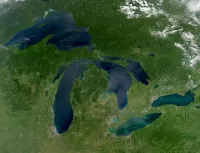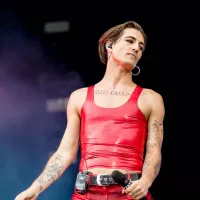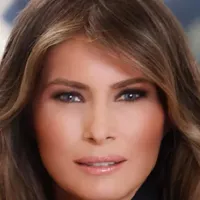The wolf, or grey wolf, is a canine native to Eurasia and North America. With over thirty recognized subspecies, it's the largest wild member of the Canidae family. Wolves are distinguished by their less pointed ears and muzzle, shorter torso, and longer tail compared to other Canis species. They can also hybridize with smaller species like coyotes and jackals. Their fur is typically mottled in shades of white, brown, grey, and black, though Arctic subspecies can be nearly all white.
1905: Last Japanese wolf
The last Japanese wolf was captured and killed in 1905.
1921: Custer Wolf and coyotes
According to a press release by the U.S. Department of Agriculture in 1921, the infamous Custer Wolf relied on coyotes to accompany him and warn him of danger.
1954: Wolf protection in Israel
In 1954, Israel protected its wolves and has since maintained a moderately sized population through effective enforcement of conservation policies.
1963: Publication of Never Cry Wolf
Farley Mowat's largely fictional memoir Never Cry Wolf was published in 1963 and is widely considered to be the most popular book on wolves.
1963: Wolf Specimen from Southern China
In 1963, a museum specimen of a wolf from southern China showed a genome that was 12–14% admixed from an unknown canid.
1973: Endangered Species Act (ESA)
In 1973, wolves were given protection under the Endangered Species Act (ESA) in the United States.
1977: Mexican wolf collaboration
From 1977 to 1980, the Mexican and U.S. governments collaborated to capture all remaining Mexican wolves to prevent their extinction and established captive breeding programs for reintroduction.
1979: Berne Convention
In 1979, the wolf was strictly protected under the Berne Convention on the Conservation of European Wildlife and Natural Habitats (Appendix II) in many EU countries.
1980: Mexican wolf collaboration
From 1977 to 1980, the Mexican and U.S. governments collaborated to capture all remaining Mexican wolves to prevent their extinction and established captive breeding programs for reintroduction.
1980: European wolf rebound
Since 1980, European wolves have rebounded and expanded into parts of their former range.
1992: Council Directive 92/43/EEC
In 1992, the wolf was strictly protected under the Council Directive 92/43/EEC on the Conservation of Natural Habitats and of Wild Fauna and Flora (Annex II and IV) in many EU countries.
1999: Mitochondrial DNA study
In 1999, a mitochondrial DNA (mtDNA) study was used to inform the decision about listing 38 subspecies of Canis lupus.
2002: Rabid wolf attacks
During the fifty years up to 2002, there were eight fatal attacks in Europe and Russia, and more than two hundred in southern Asia due to rabid wolves.
2003: Global wild wolf population estimate
In 2003, the global wild wolf population was estimated at 300,000. The IUCN classifies the wolf as Least Concern on its Red List.
2005: Mammal Species of the World
In 2005, W. Christopher Wozencraft listed 36 wild subspecies under Canis lupus in the third edition of Mammal Species of the World, also proposing two additional subspecies: familiaris and dingo.
2007: Wolf population Iberian peninsula
As of 2007, there were around 2,500 wolves in the northwest Iberian peninsula.
2016: Genomic Study on Wolf Divergence
A 2016 genomic study suggests that Old World and New World wolves split around 12,500 years ago followed by the divergence of the lineage that led to dogs from other Old World wolves around 11,100–12,300 years ago.
2016: Wolf number estimates in 2016
As of 2016, estimates of wolf numbers include: 4,000 in the Balkans, 3,460–3,849 in the Carpathian Mountains, 1,700–2,240 in the Baltic states, and 1,100–2,400 in the Italian Peninsula.
2017: Wolf range across China
2017 evidence suggests that wolves range across all of mainland China.
2018: Wolf Population in Midwestern United States
As of 2018, the repopulation of wolves in Midwestern United States has been concentrated in the Great Lakes states of Minnesota, Wisconsin and Michigan where wolves number over 4,000.
2019: Indian wolf population estimate
As of 2019, it is estimated that there are around 2,000–3,000 Indian wolves in the country.
2019: IUCN/Species Survival Commission Workshop
In 2019, during a workshop hosted by the IUCN/Species Survival Commission's Canid Specialist Group, the New Guinea singing dog and the dingo were considered feral Canis familiaris, and should not be assessed for the IUCN Red List.
2021: Himalayan and Indian wolf lineage
A 2021 study found that the Himalayan wolf and the Indian plains wolf are part of a lineage that is basal to other wolves and split from them 200,000 years ago.
2021: Dog to wolf gene flow
In 2021, a genetic study found that the dog's similarity to the extant grey wolf was the result of substantial dog-into-wolf gene flow, with little evidence of the reverse.
2024: Mexican Wolf Population Numbers
As of 2024, the reintroduced Mexican wolf population numbers over 250 individuals.
Mentioned in this timeline
India officially the Republic of India is a South Asian...
China officially the People's Republic of China PRC is an...

The Great Lakes are a chain of five large interconnected...
Russia officially the Russian Federation is a transcontinental country spanning...
Israel located in the Southern Levant region of West Asia...
Michigan is a peninsular state in the Great Lakes region...
Trending

Rico Dowdle is an American professional football running back currently playing for the Carolina Panthers in the NFL He played...

6 months ago Robert De Niro's best and worst performances, Netflix movie review and The Intern

7 months ago Paul Skenes enjoys College World Series while Olivia Dunne supports with LSU jersey.

8 months ago Damiano David Explores Vulnerability and Growth in New Album 'FUNNY little FEARS'

8 months ago Declan Rice returns against Newcastle; Havertz nearing return from hamstring injury at Arsenal.

5 months ago Bo Bichette Hailed Jays Fans After Yankees Series Amid Lineup Placement Debate
Popular

Stranger Things created by the Duffer Brothers is a popular...

XXXTentacion born Jahseh Dwayne Ricardo Onfroy was a controversial yet...

Kelsey Grammer is an accomplished American actor producer and singer...

Candace Owens is an American conservative political commentator and author...

Melania Trump a Slovenian-American former model has served as First...

Bernie Sanders is a prominent American politician currently serving as...

